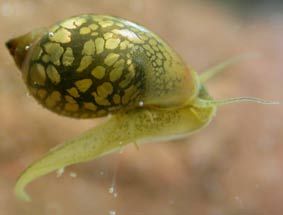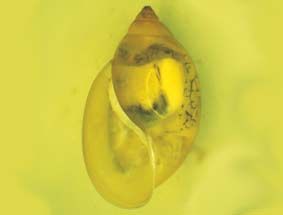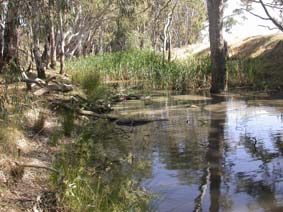Major Group: Gastropoda
Order: Hygrophila
Family: Physidae
Genus: Physa (may be recorded as Physella)
Species: acuta
This family is represented in Asutralian freshwaters by a single species, Physa acuta Draparnaud. |
Descriptive Features: true molluscan gill lost, replaced by various types of secondary gills in some groups
position of eyes relative to tentacles variable, usually at inner bases or at middle of bases
hermaphroditic (simultaneous or protandric)
operculum typically absent, present in 2 basal families (one estuarine)
mantle cavity modified as pulmonary cavity
head and snout spread laterally
radula with many tooth rows (most teeth rather similar)
operculum absent
eyes on inner side of tentacle bases
shell coiled, sinistral, spire short to moderate
mantle edge digitate, no pseudobranch
Size: |

|
Physella acuta |
|
|

|
Physella acuta |
|
Taxonomic Checklist:
Physa acuta Draparnaud
(introduced from Europe or North America) |
|
Distribution: ACT, NSW, Tas, Vic, SA
Sensitivity Rating: SIGNAL grade 1
Functional Feeding Group: scrapers |

|
Tuppal Creek near Deniliquin, NSW |
|
|
Ecology: Instream habitat: Physa acuta occurs in lotic and lentic waters such as ditches, ponds, lakes, small streams and rivers. It is generally found amongst vegetation.
Feeding ecology: Physa acuta is a scraper feeding on green algae, macrophytes and diatoms.
Habit:
Life history: Physa acuta snails are hermaphrodites capable of self-fertilisation. They reproduce at least once a year in Australia and have two breeding seasons in the Northern Hemisphere. The life span is seven to twelve months. |
| |
Information Sources: Ponder 2001, 2013, Smith 1992, 1996, Gooderham & Tsyrlin 2002, Taylor 2003, Dillion 2000, Serafiński et al. 1989, Sloane & Norris 2002 |
|
|
|